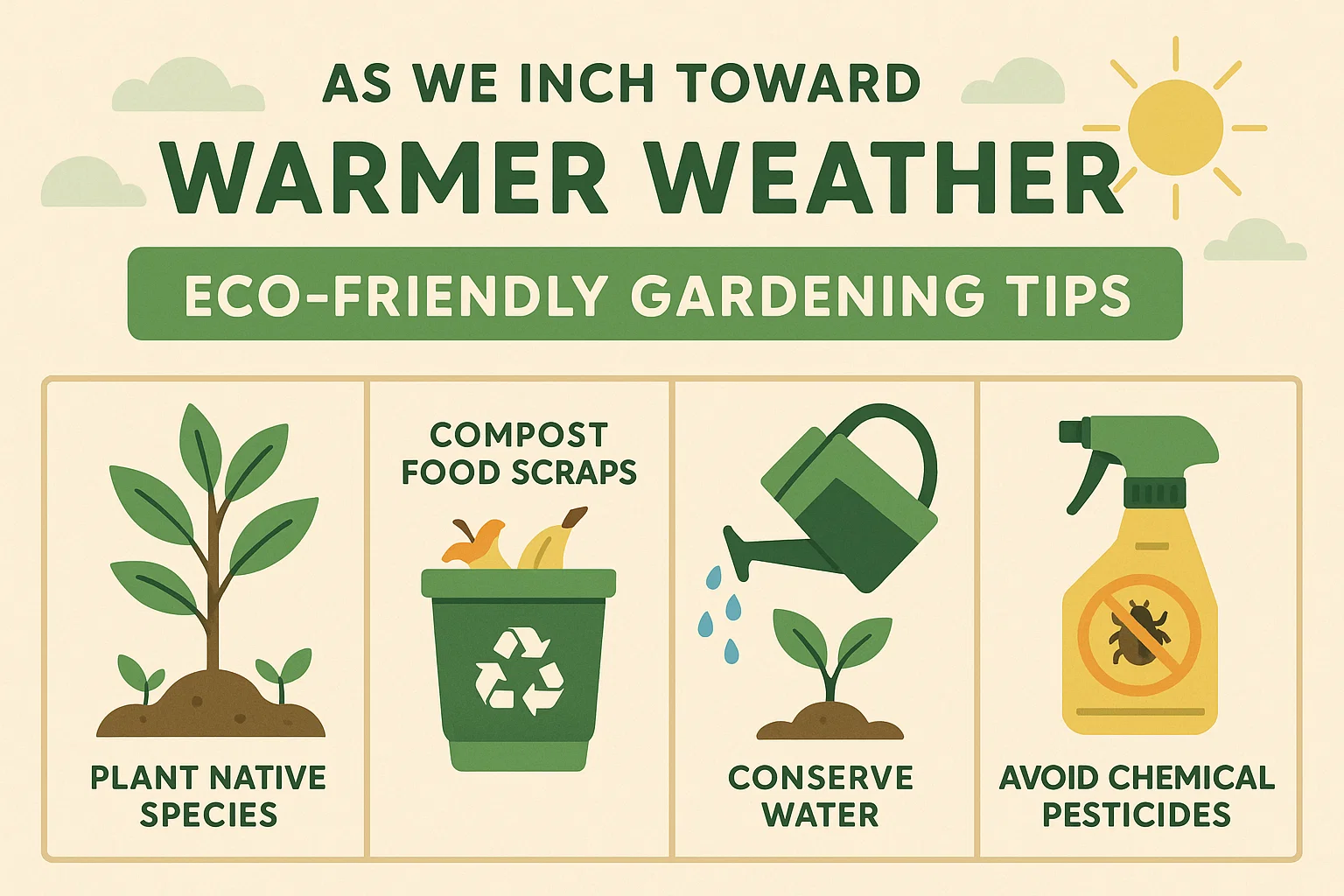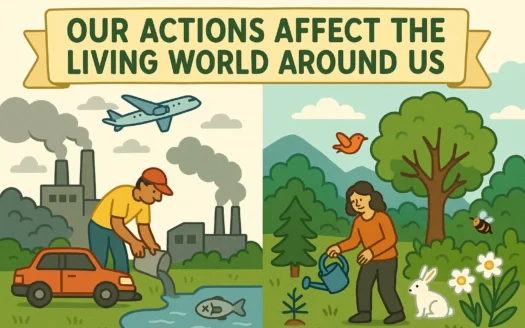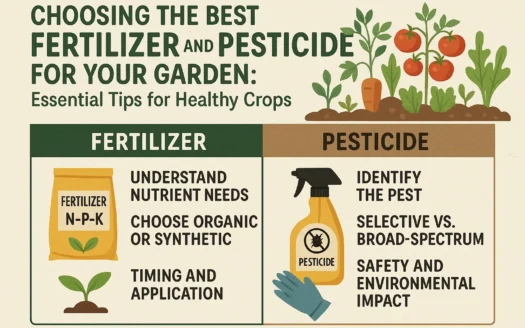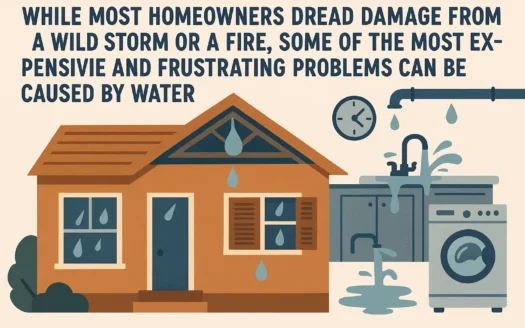As We Inch Toward Warmer Weather: Eco-Friendly Gardening Tips
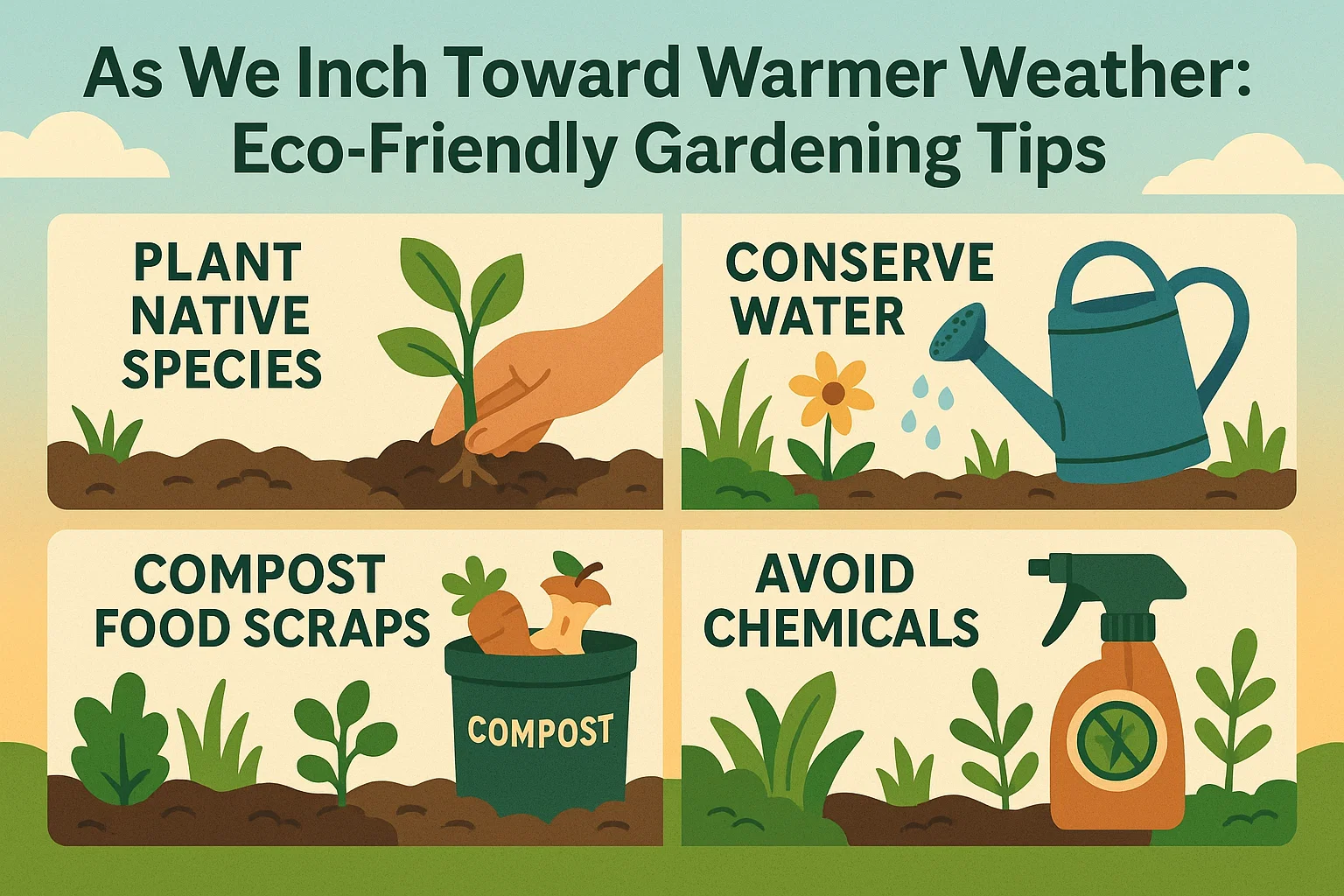
As We Inch Toward Warmer Weather: Eco-Friendly Gardening Tips
Reduce Water Waste
Outdoor water use accounts for around 30% of the average homeowner’s water consumption, with even higher numbers in warmer climates. Here’s how to conserve:
- Mulch: Place mulch around plants to slow evaporation and retain moisture.
- Water Timing: Water gardens in the evening to minimize evaporation.
- Drought-Tolerant Plants: Opt for plants that thrive with minimal watering.
- Group Thirsty Plants: Cluster water-heavy plants in one area to limit excess watering.
- Rainwater Harvesting: Use rain barrels to collect water—some utilities even offer rebates!
Fill Your Garden with Native Plants
Native plants are naturally adapted to your region’s climate and pests, reducing the need for irrigation and pesticides. They also support local ecosystems by attracting native pollinators and predators.
Grow Your Own Foods
Transform your garden into a source of fresh, sustainable nutrition:
- Fruits and Vegetables: Homegrown produce cuts down on transportation and packaging waste while boosting nutrient intake.
- Protein-Rich Plants: Incorporate edamame, quinoa, or kale to reduce reliance on meat, which has a high carbon footprint.
Create Your Own Compost
Composting reduces landfill waste and enriches soil naturally. Combine yard waste (leaves, grass clippings) with kitchen scraps (vegetable peels, eggshells) in a well-drained bin. Benefits include:
- Reduced need for chemical fertilizers
- Weed and pest suppression
- Potential trash collection discounts (check local programs)
Improve Air Quality by Planting Trees
Trees act as natural air purifiers, especially in urban areas. Large species like conifers or magnolias offer added benefits:
- Cool surrounding areas through shade
- Reduce noise pollution
- Enhance mental and physical health by filtering pollutants
Final Thoughts
Earth-friendly landscaping isn’t just a trend—it’s a commitment to healthier communities and a sustainable planet. By adopting these practices, you’ll create a garden that nourishes both people and the environment.
